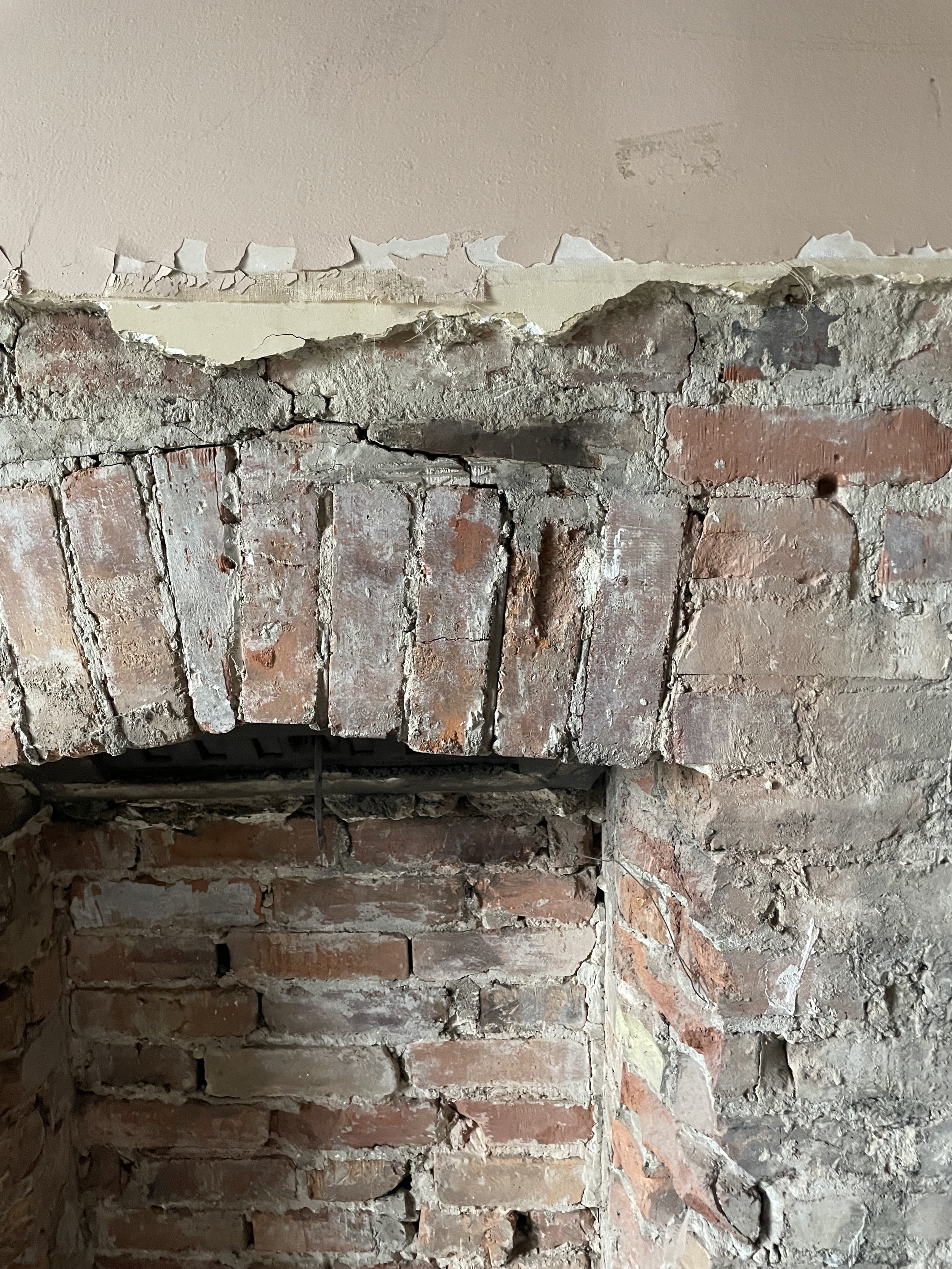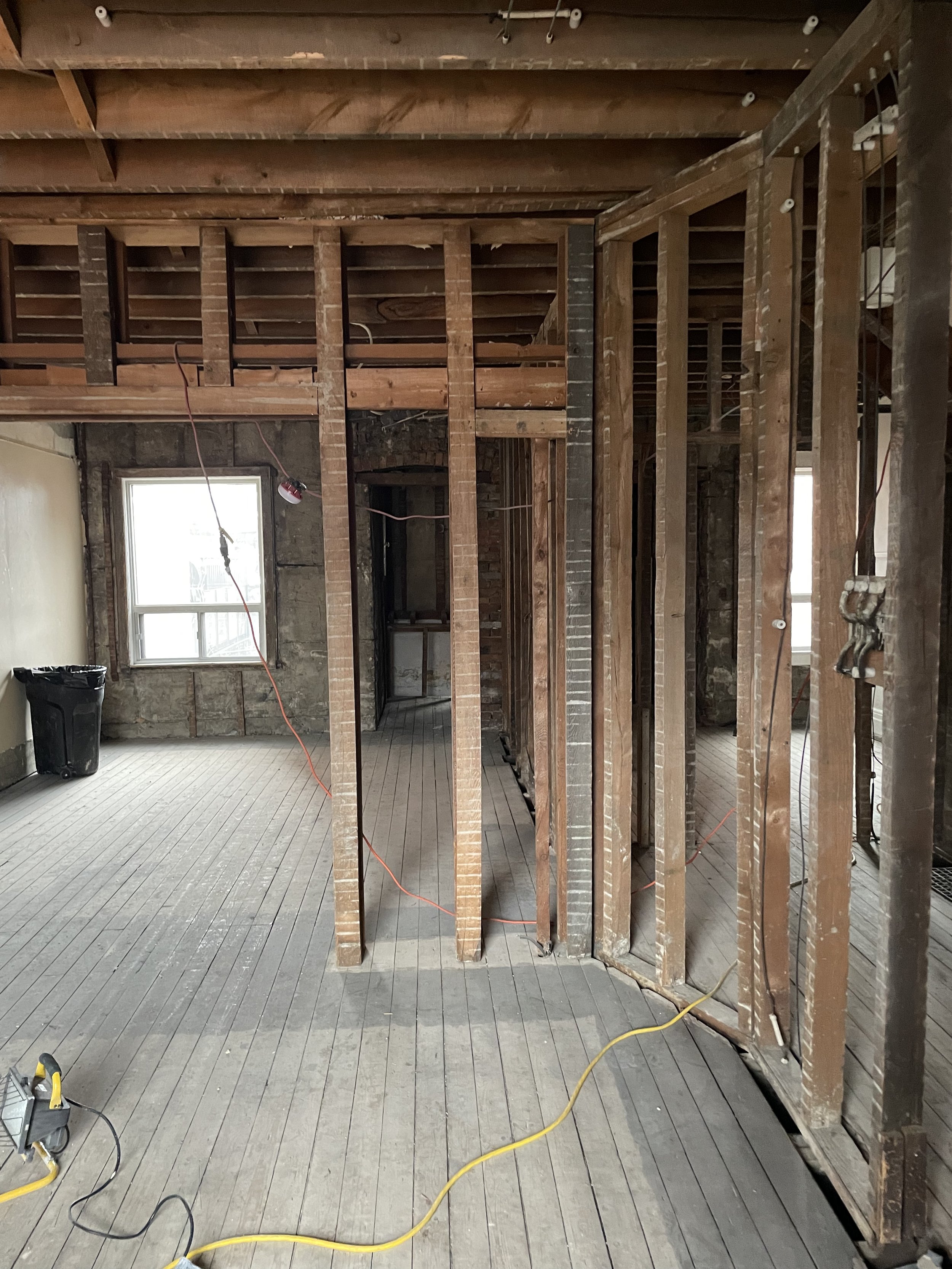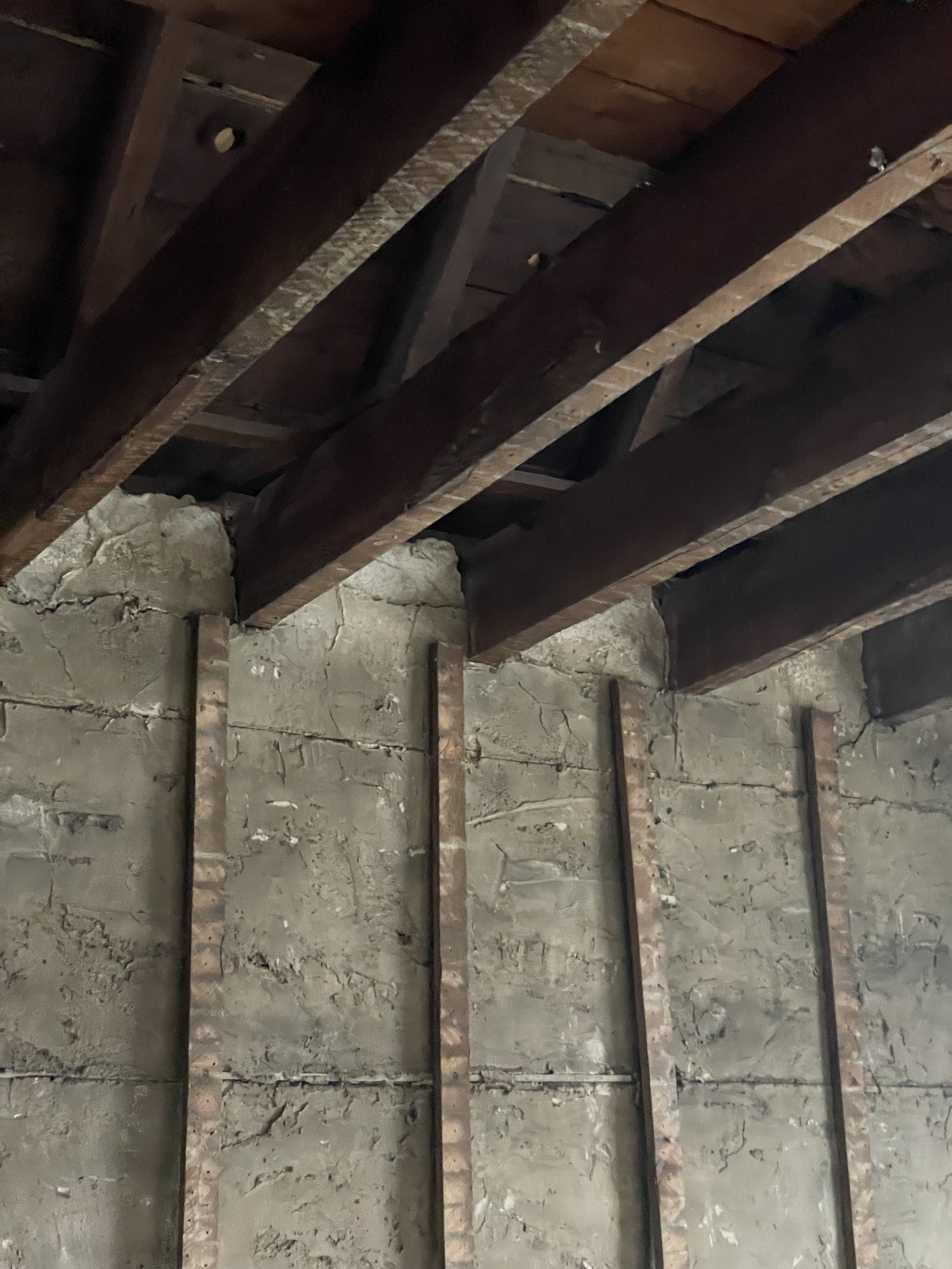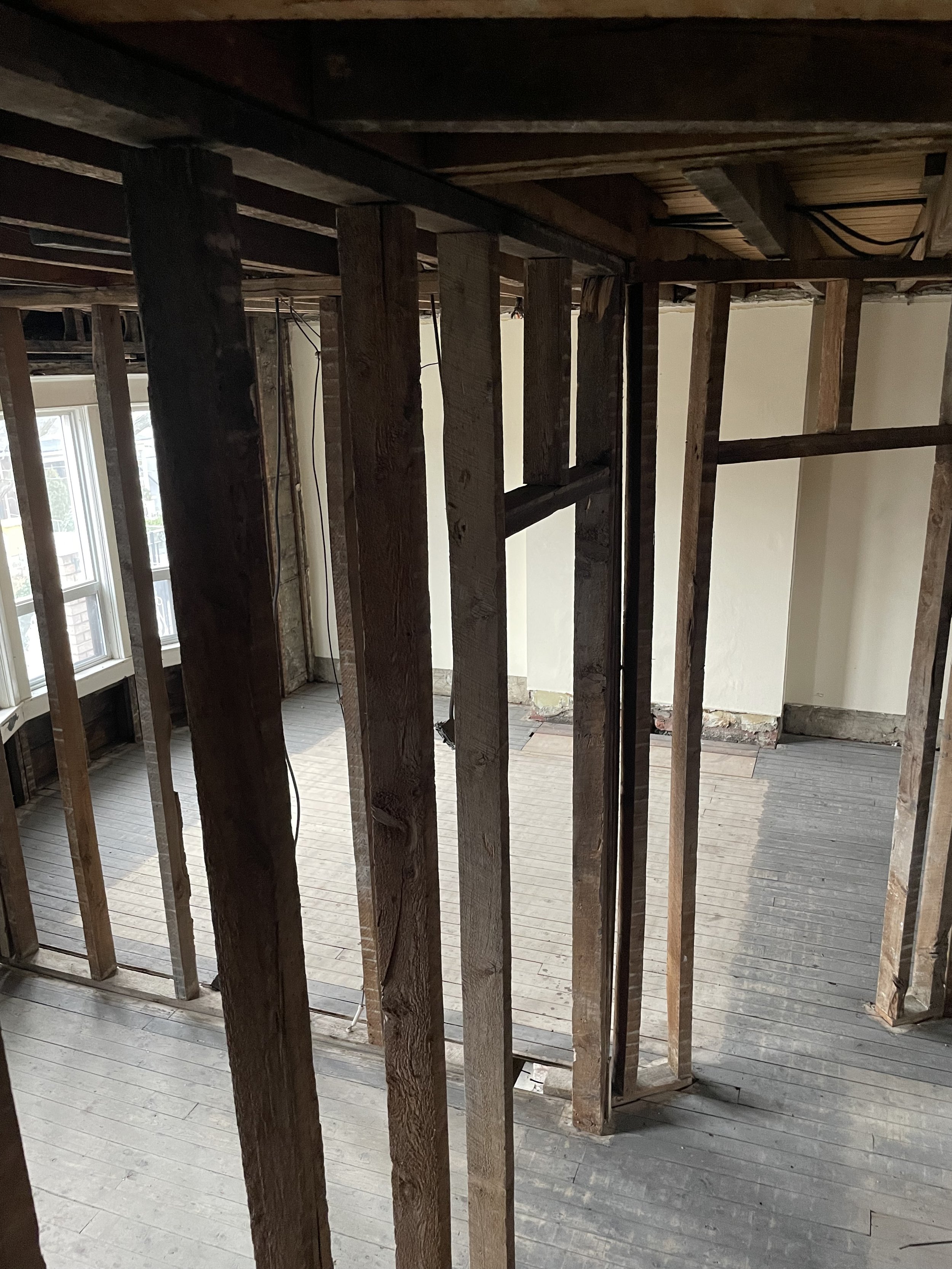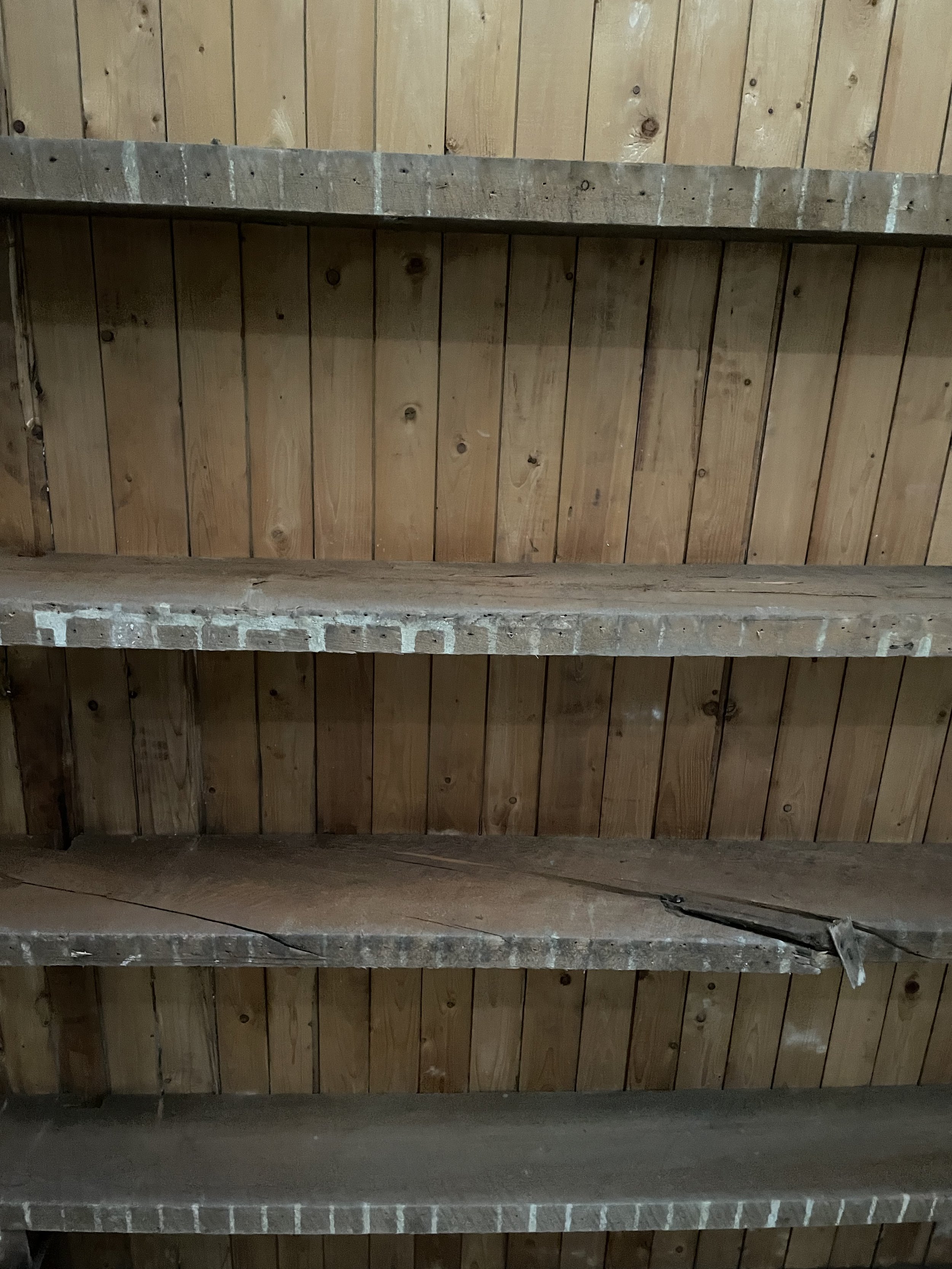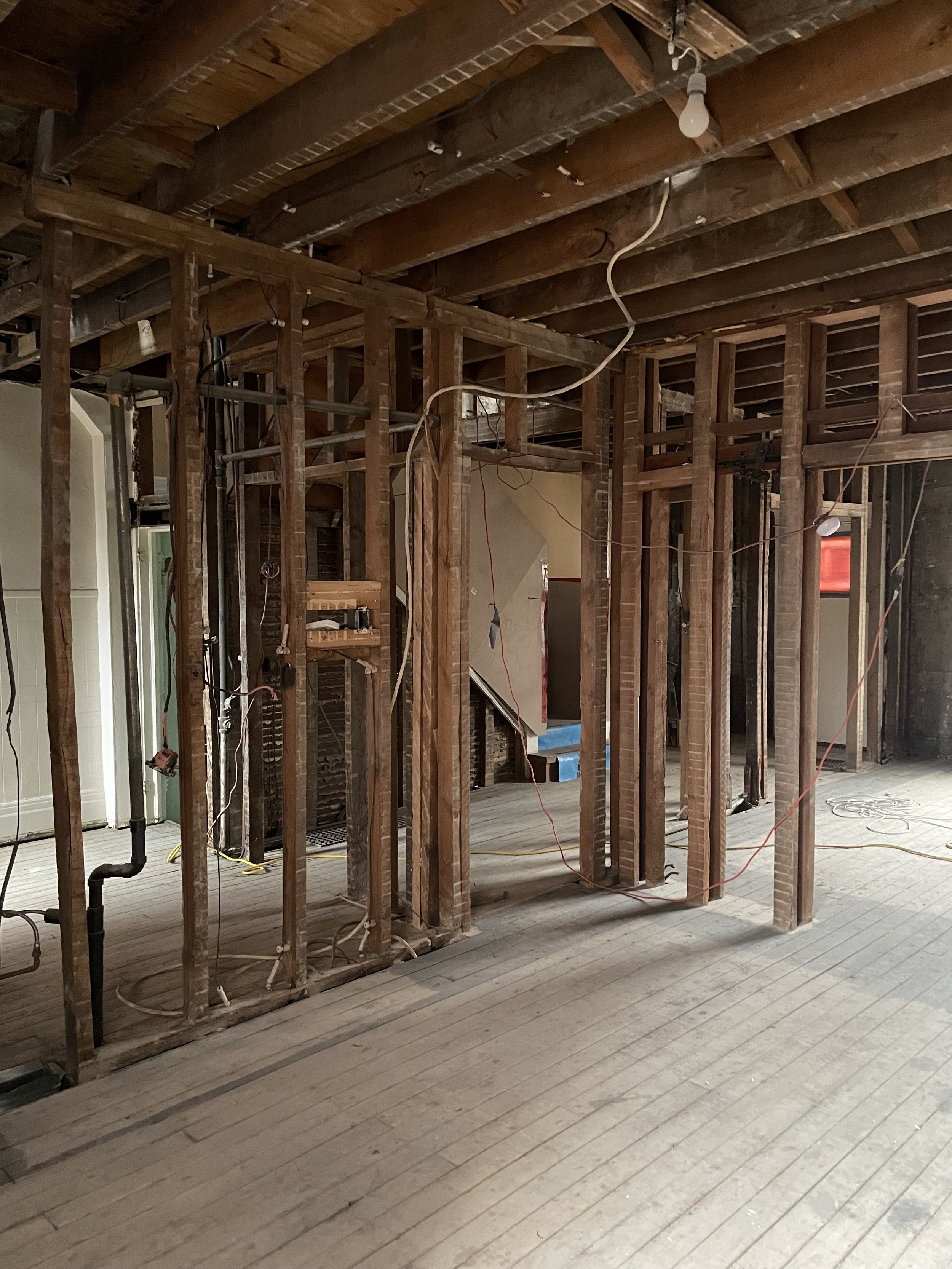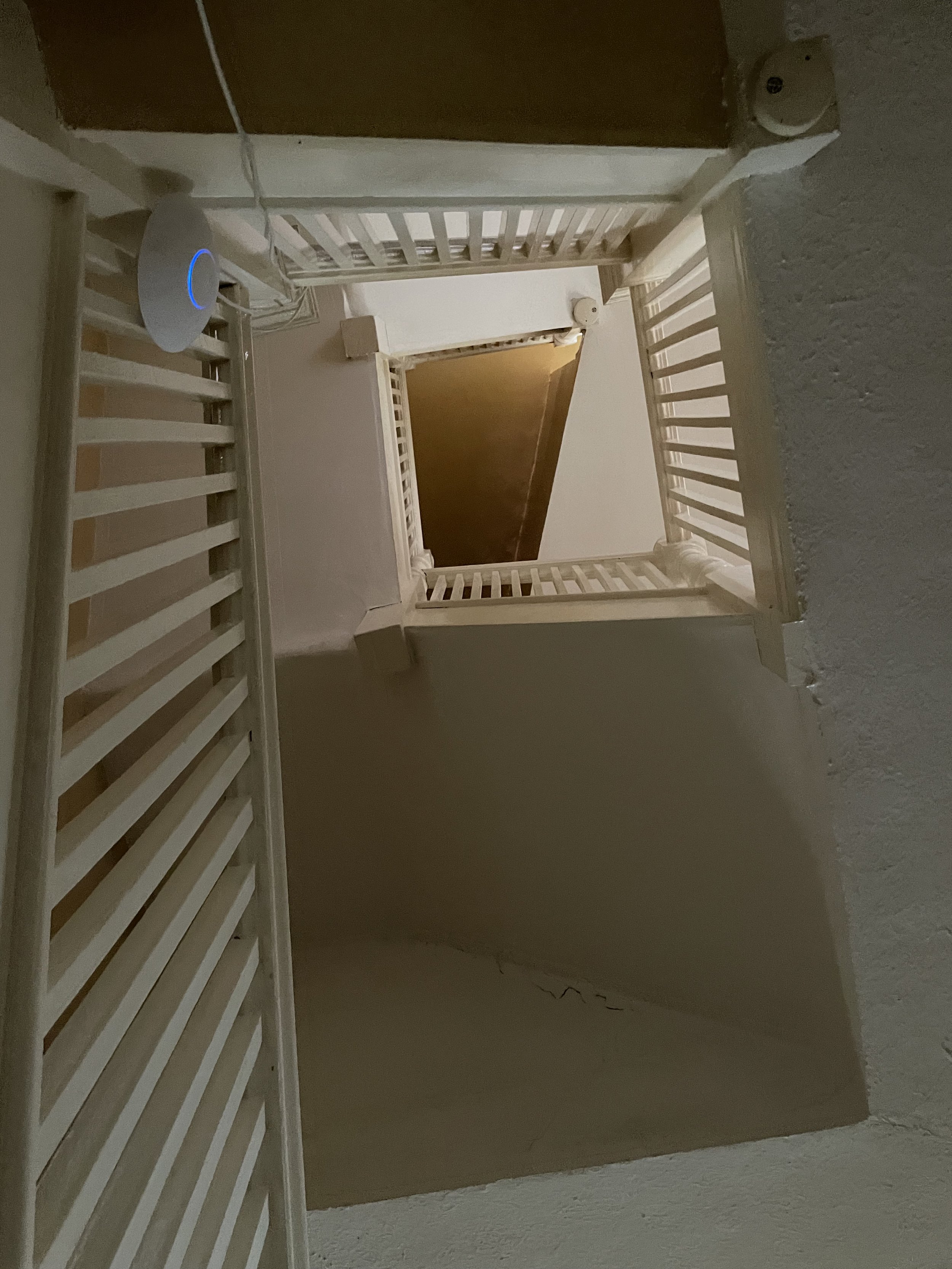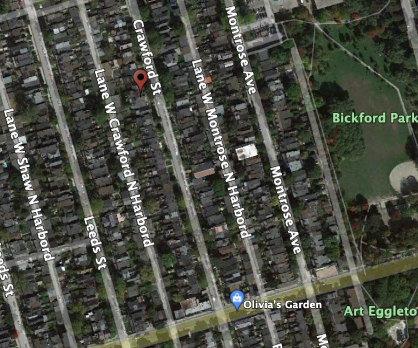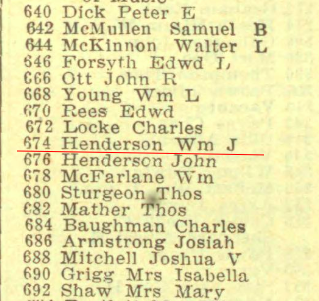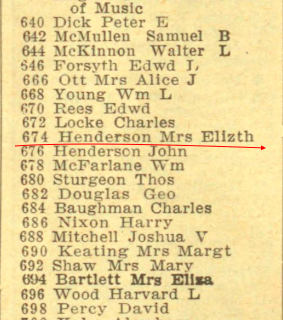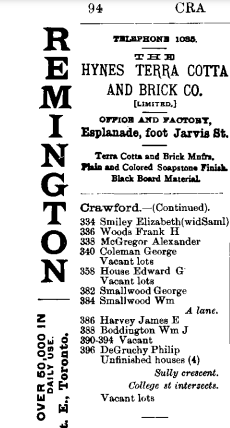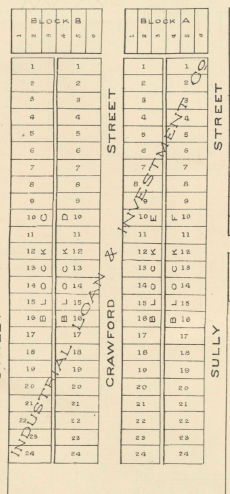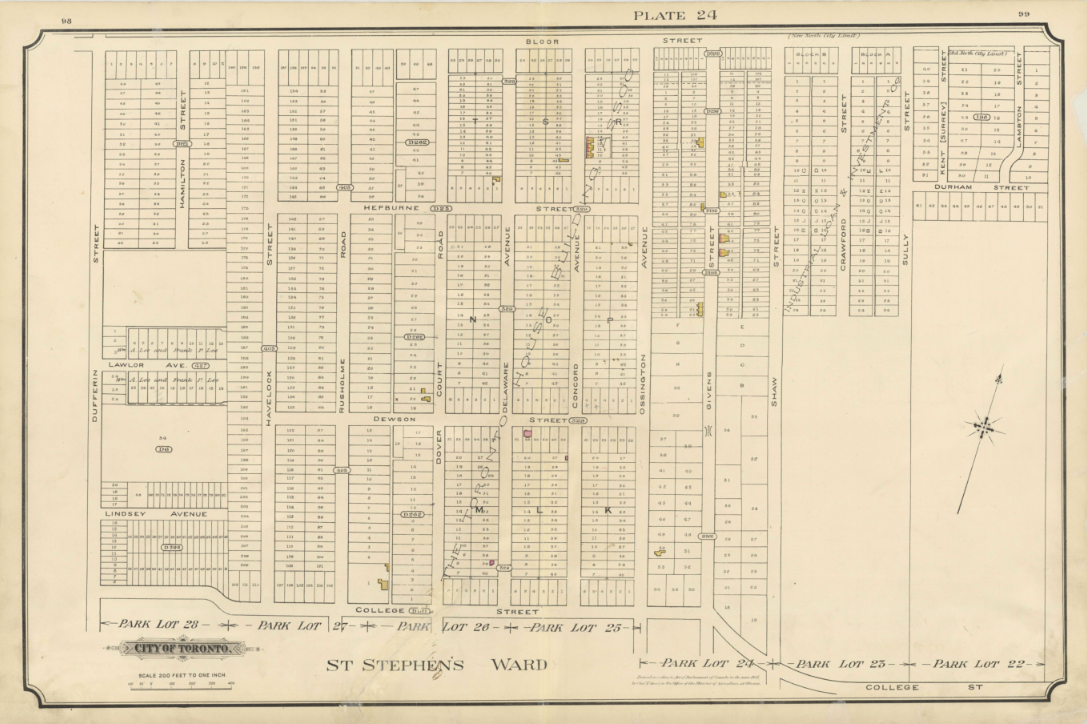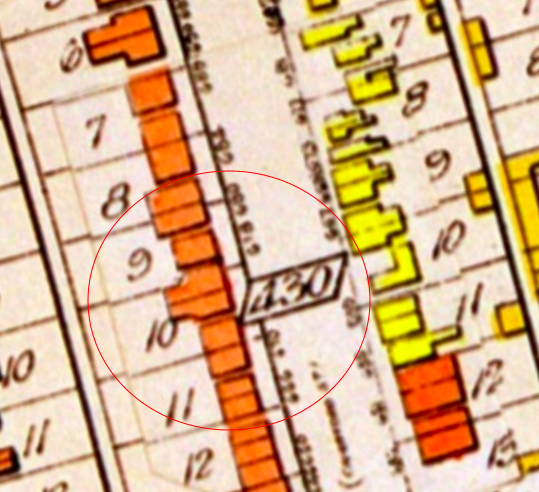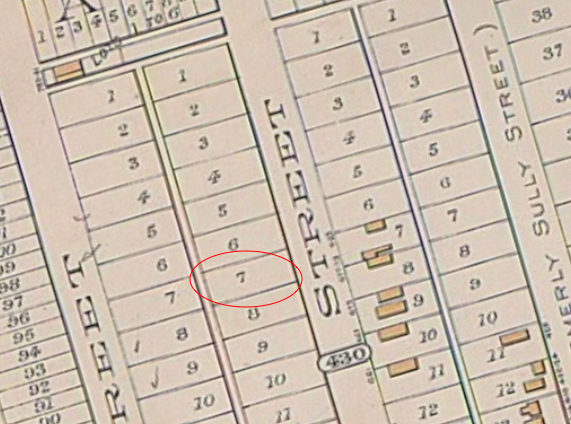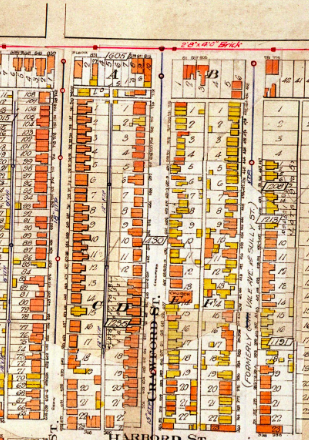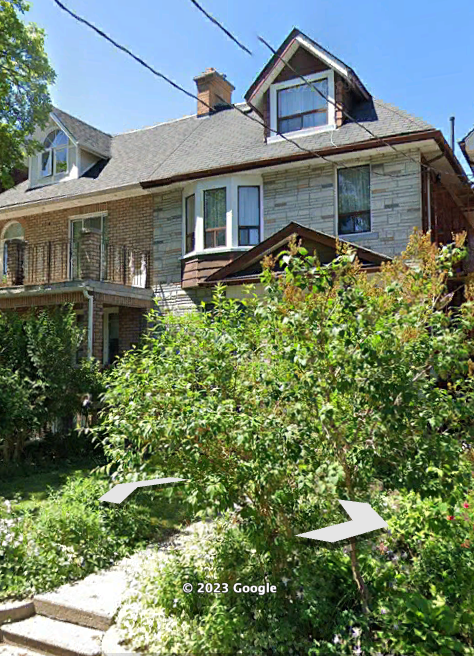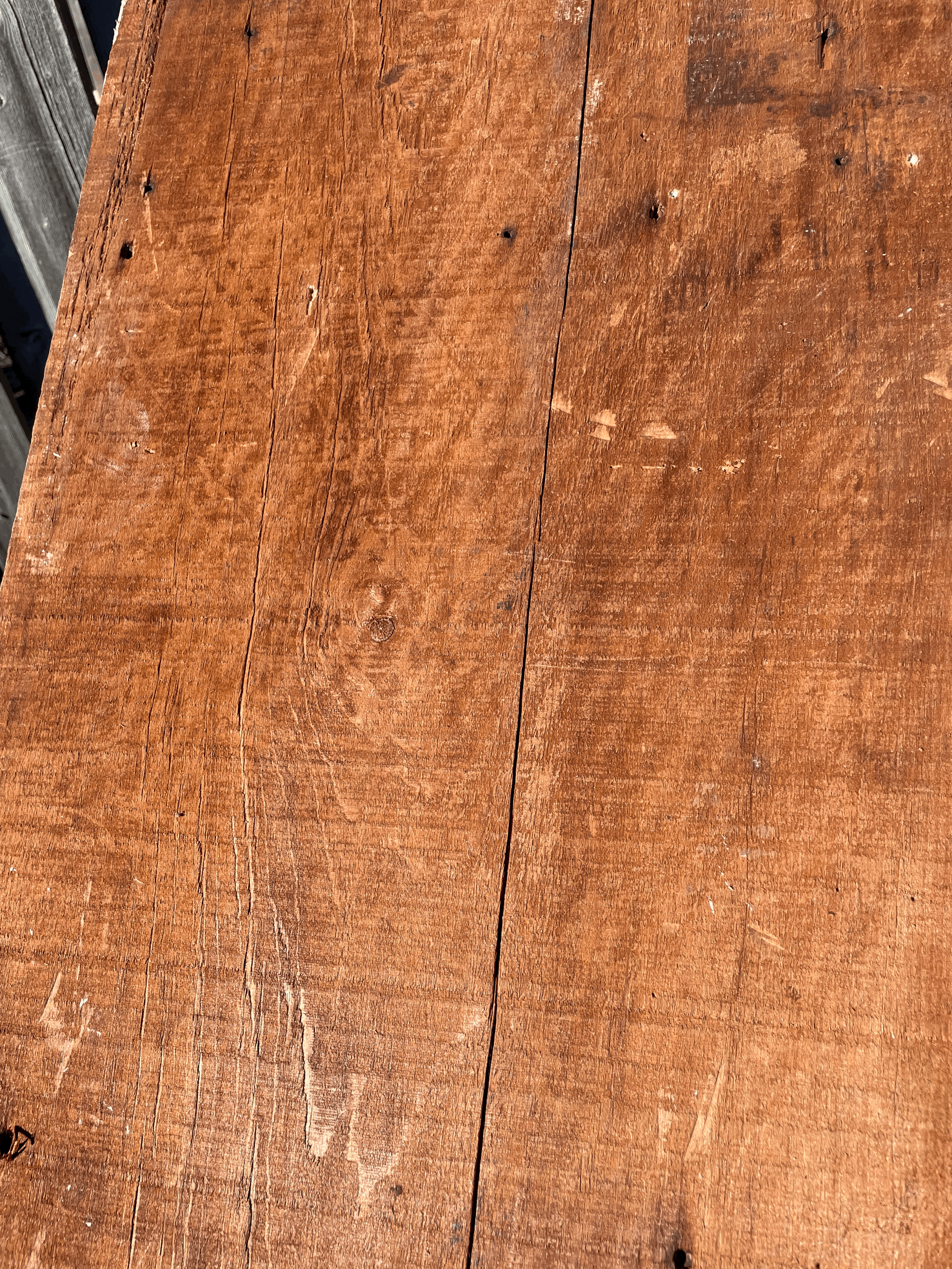Crawford
We executed an interior strip at Crawford Street, removing trim, flooring, vintage light fixtures, and old growth Douglas fir lumber. Some of this lumber found a new life as a custom-designed bench for the Bentway's 2023 season. The home underwent a full interior demolition after our deconstruction efforts in preparation for an interior re-design. We worked with the framing company to recover the old growth lumber they removed to accommodate the new open floor plan design.
History
The intriguing history of Crawford St, predominantly owned by the Ontario Industrial Loan & Investment Co, began to unfold in 1885. It was during this year that the company, nestled under the management of J. Gormley, embarked on developing the vacant lots below College St. The company was also listed on the 1887 York Tax Assessment, its presence established at 24 Victoria St in the Toronto Arcade.
In addition to an official office, the company employed a local representative, Mr. Lightbourne. Residing at 77 Crawford St, he provided an immediate point of contact for potential investors and interested parties.
Interestingly, by 1889, despite surrounding plots displaying signs of development, the plot remained vacant. This trend seemed to continue into 1903. However, the scene was gradually changing across the street; a few plots started showing promising signs of development, yet the Western side of Crawford remained mostly uninhabited.
A notable change occurred by 1913 when semi-detached and detached houses began to spring up, and addresses were established. Around this time, it seems that the structure that would become 674 Crawford was built.
Fast forward to 1926, buildings spanned across Plots 9 and 10, both of which were housing other structures. The distinct red colour marked on the Toronto City Fire Maps indicated the use of brick in these newly erected edifices.
The first resident of 674 Crawford, as listed in the records, was William J. Henderson in 1912. Thereafter, Mrs. Elizabeth Henderson is recognized as the primary resident, as per the 1913 Toronto City Directory. The adjacent property also appeared to be owned by a Henderson, presumably a relative of the late William.
Moreover, the completion of the house coincided with a significant era in Canadian history. It was a time when British North America's exportation of Douglas fir for construction was on the rise. By 1910, it had outpaced Quebec's timber production, and by the late 1920s, it accounted for half of Canada's annual cut lumber, according to The Canadian Encyclopedia.

